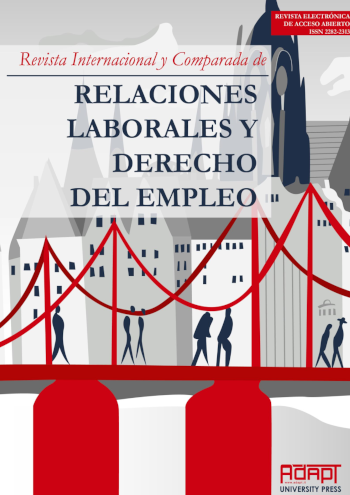Abstract
La histórica preocupación de la OIT por el trabajo portuario se tradujo, en el año 1973, en la adopción de un Convenio, el n. 137, específico en la materia. El texto en cuestión, precedido de u intenso debate acerca de la naturaleza que debía darse al instrumento internacional (ya convenio, ya recomendación), centró su contenido en la creación de un registro para todas las categorías de trabajadores portuarios como instrumento para alcanzar el objetivo de asegurarles una estabilidad en el empleo y/o ingresos mínimos garantizados. La escasa ratificación del Convenio, la existencia de una denuncia, así como los problemas que la puesta en práctica de algunas de sus prescripciones han suscitado – especialmente en relación con los principios y libertades fundamentales de la Unión Europea – hacen que surjan importantes dudas acerca de la pertinencia – y vigencia – actual de un instrumento nacido en un contexto económico y social donde el trabajo de manipulación de mercancías en los puertos presentaba una fisonomía muy distinta a la que muestra en la economía digitalizada y globalizada de hoy en día.
The historical concern of the ILO for dock work was translated, in 1973, in the adoption of a Convention, the No. 137, specific in the matter. The text, preceded by an intense debate about the nature that should be given to the international instrument (convention or recommendation), focused its content on the creation of a register for all categories of dockworkers as an instrument to achieve the objective to assure them a regular job and/or guaranteed minimum income. The low ratification of the Convention, the existence of a complaint, as well as the problems that the implementation of some of its prescriptions have raised – especially in relation to the essential principles and freedoms of the European Union – raise important doubts about of the relevance – and validity – of an instrument born in an economic and social context where the methods of cargo handling in docks presented a very different physiognomy to that shown in today’s digitalized and globalized.

